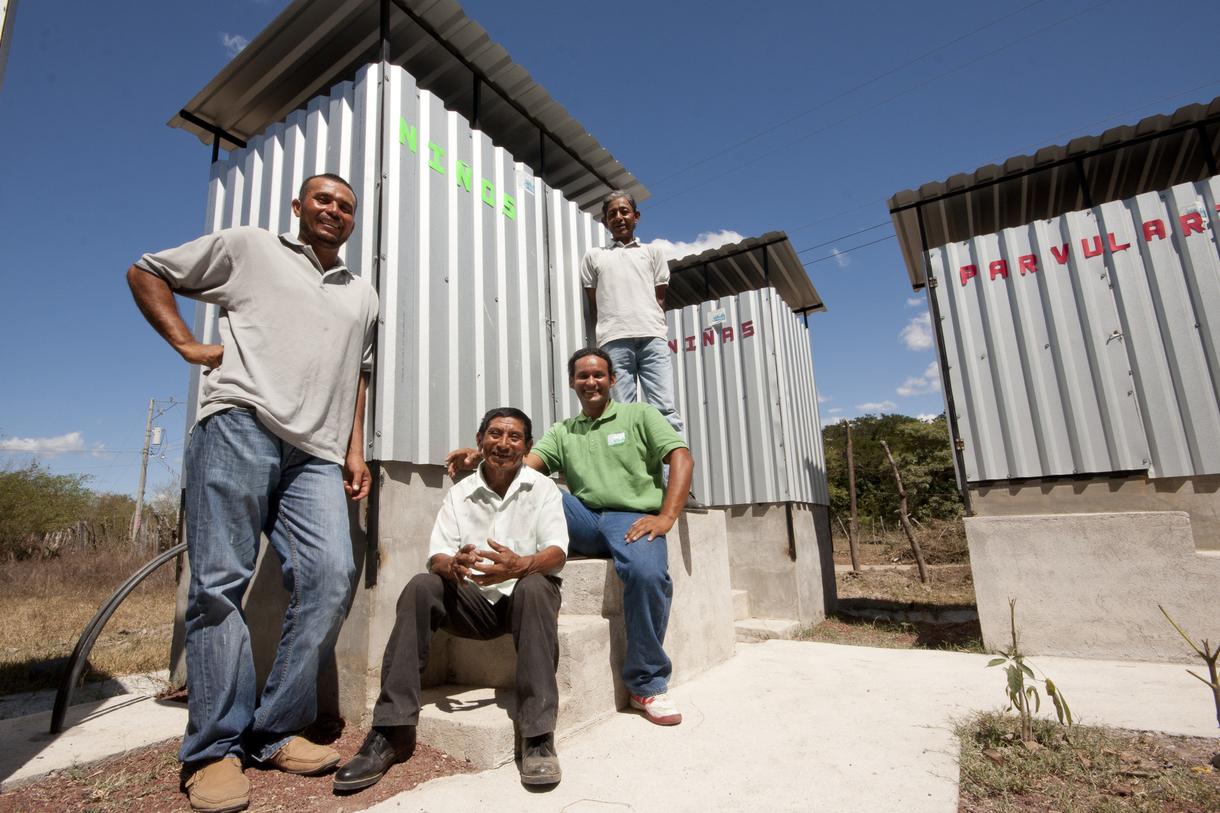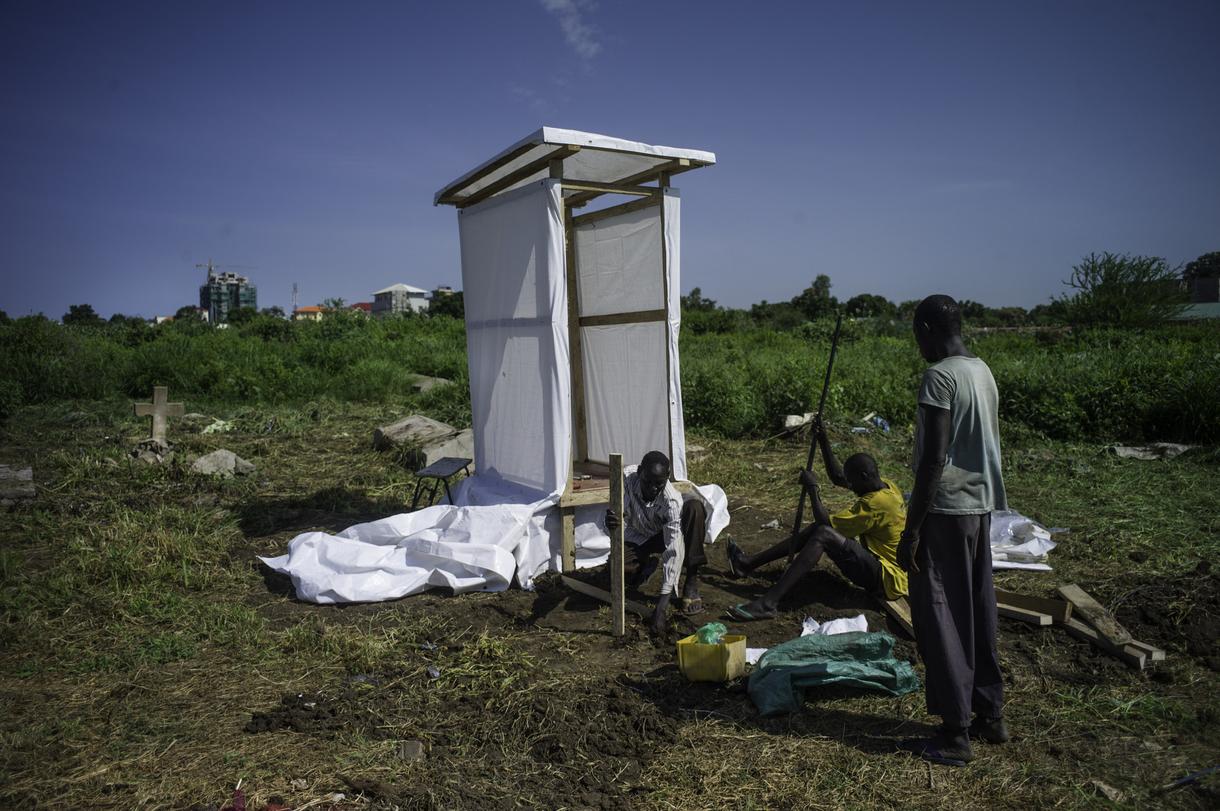It’s called a latrine and as World Toilet Day approaches, now is the time to focus on the importance of decent sanitation for everyone on our planet.
Floating toilets. Toilets on wheels pulled by bikes. Toilets that compost. In his 30 years of worrying about human waste, there’s probably not a variation on this most fundamental of fixtures that Andy Bastable, head of water and sanitation for Oxfam Great Britain, hasn’t seen.
On our increasingly crowded planet where experts predict that 66 percent of the population will be living in urban areas by 2050, the simple latrine is more essential than ever. But today, an estimated 1.1 billion people still make do without—relieving themselves in the open where their wastes can contaminate drinking water and spread disease.
That’s why, in 2013, the UN General Assembly decided to set aside one day each year to raise awareness about the undeniable link between decent sanitation and the fight against poverty. That day is November 19—the one day all taboos against bathroom talk can be forgotten in favor of frank discussion on how to solve a public health problem that menaces rural and urban communities around the world.
“One in three people do not have a basic toilet,” said Jan Eliasson, the UN deputy secretary-general, last year after the UN established World Toilet Day. “Almost 2,000 children die every day from preventable diarrheal disease. Poor sanitation and water supply result in economic losses estimated at $260 billion annually in developing countries.”
Over the years, there have been plenty of technical advances made in the delivery of water to people, said Bastable, citing the huge increase in water filtration and purification technologies as well as water pumping techniques. But when it comes to low-cost sanitation efforts, which don’t generate a great deal of revenue for private companies, the inventiveness has been in short supply.
“Sanitation is the poor cousin to water,” said Bastable.
Further, some governments in the developing world aren’t investing the money that’s needed to build sewage systems and treatment plants for their countries or to maintain the ones they have, allowing sewage to run off, untreated, into nearby oceans.

Peer pressure and priorities
A shortage of resources may not be the only impediment to improving global sanitation. Encouraging people to change their behavior and actually use latrines can present its own set of difficulties. The challenge is similar to the one anti-smoking campaigns confront: You can tell people what’s bad for them and show them the evidence, but that won’t necessarily make them change their ways.
Instead, said Bastable, development organizations working to help communities improve their sanitation have got to make the toilet pitch aspirational. For example, if a village elder can be convinced to build a latrine and use it, chances are the rest of the community will want one, too.
“Peer pressure—the cool factor—creates behavioral change,” he said.
Often, latrines are on the bottom of a family’s must-have list—especially when there are food, shelter, clothing, and a score of other needs to consider first. Bastable recalled an emergency response he helped with in Colombia some years ago. One of Oxfam’s initiatives at the time was to distribute cash to vulnerable families so they could make their own decisions about what they needed most to weather the crisis. When Oxfam reviewed the choices, it found that spending money on new toilets or upgrading existing ones was a very low priority.

Marketing toilets
To counteract some of the trepidation about toilets, aid groups are focusing on a method called “community led total sanitation.” The idea is to encourage families to start small by building rudimentary toilets that may be nothing more complicated than a hole in the ground covered by wooden slabs.
The thinking behind this approach is that it’s better for families to have some means of safe disposal of wastes rather than none at all. And when they are able to, they can upgrade their toilets with, say, a washable platform. The approach also calls for encouraging community markets to stock up on construction supplies—such as toilet bowls or concrete slabs to cover the holes of pit latrines—that are made locally so they can be more affordable to families in the area.
Long-term, the problem of ensuring decent sanitation for everyone on the planet is a complicated one, with no easy fixes.
“To solve this problem, the first thing that’s needed is behavioral change,” said Bastable. “The second thing is affordable toilets, and the third is technological advances.”
In the meantime, providing water and sanitation services, along with hygiene education, to some of the world’s most vulnerable families will continue to be a key focus of Oxfam’s work—a focus that has allowed Bastable in the past three decades to have a hand in the construction of about 10,000 toilets.
On World Toilet Day, that’s the kind of bathroom talk worth trumpeting.
